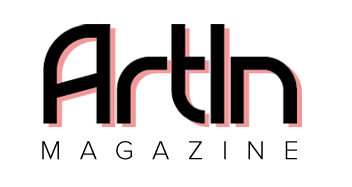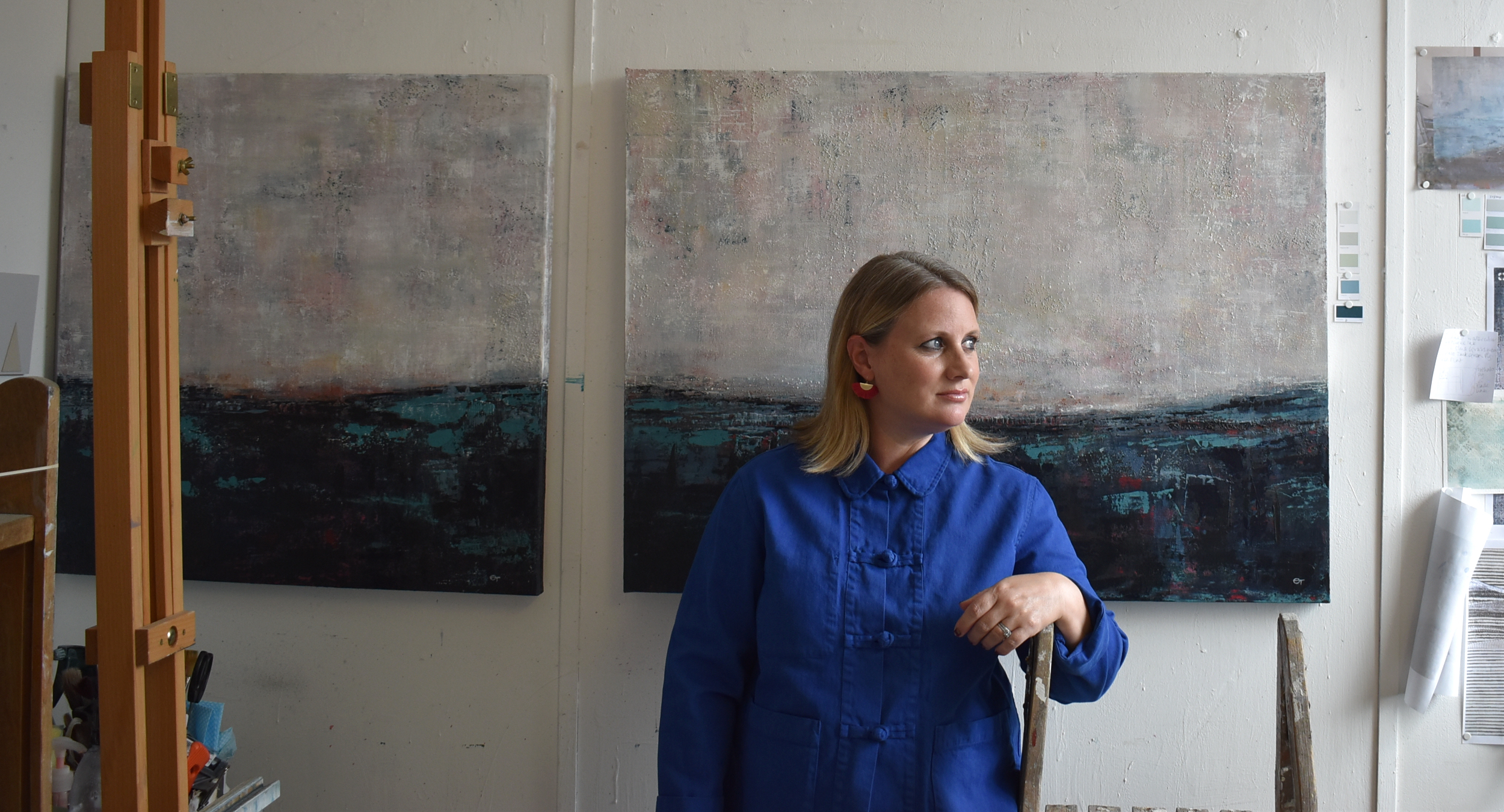Emma Tweedie is an abstract artist based in London. Before becoming a full time artist, she worked on developing brand visuals and brand footprints for international interior and fashion design houses which has contributed to her being able to successfully manage art projects and installations at the highest levels. It also gave her a an understanding on how vital it is to develop strong relationships with interior designers rather than flying solo on a design project. In this article she writes how important it is that designers work back from the art rather than it being an afterthought.
There is a hashtag trending now: #startwitheart and it couldn’t be more apt for this article. I believe that art acts as the binding agent to any interior scheme. It is the component which brings harmony to a scheme and can inject some personality to an interior. Often art is also the element that a designer will be more courageous with than say a furnishing textile or wall colour. Art brings balance, it needs to work on multiple levels in terms of the space and the client’s personality.
Interior designers are in a unique position to act as philanthropists for us artists. Their beautifully coloured walls and design visions acts as backdrops for our artworks and make them look even more special. Regular commissions that come from interior designers help many of us to stay working and creating, and with each commission, our work just gets better and better.
By commissioning an independent artist, interior designers are not only getting something that has been made skilfully with love but their ability to also help inject a third dimension of emotion into their work. I like to think that the art I make is meaningful, and there is always the backstory to my process and approach which the clients always like too. When I get to meet the client on occasion that also makes a difference, as that really spurs me on to make the painting as beautiful as I can. It helps me imagine the client looking at it for years to come. Anything of true value does generally take time to make, and so by starting with the art, the artist is not required to compromise on their process and is 100 percent happy with the final result.
Communication and working together results in the most beautiful projects in my opinion. Below I am giving some tips on how artists and interior designers can have a successful working relationship on a project and create magical interiors.
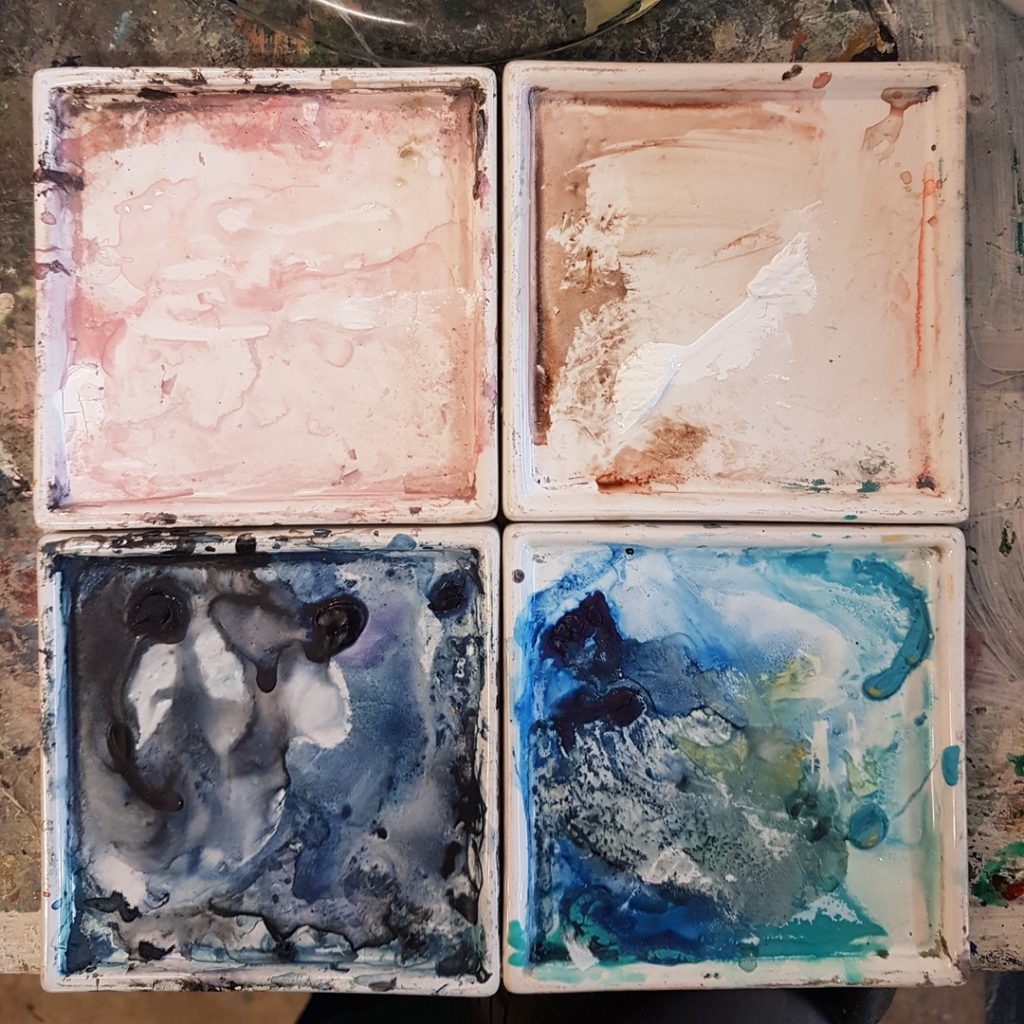
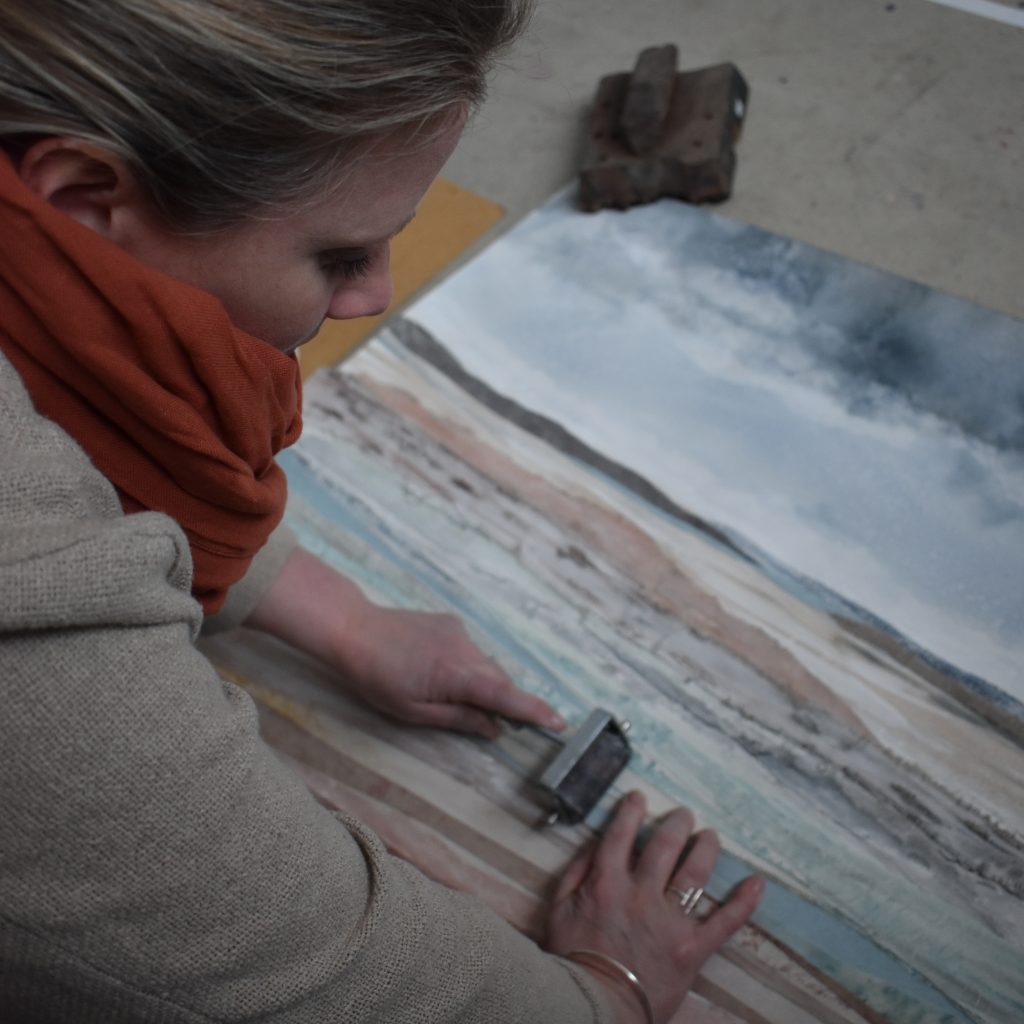
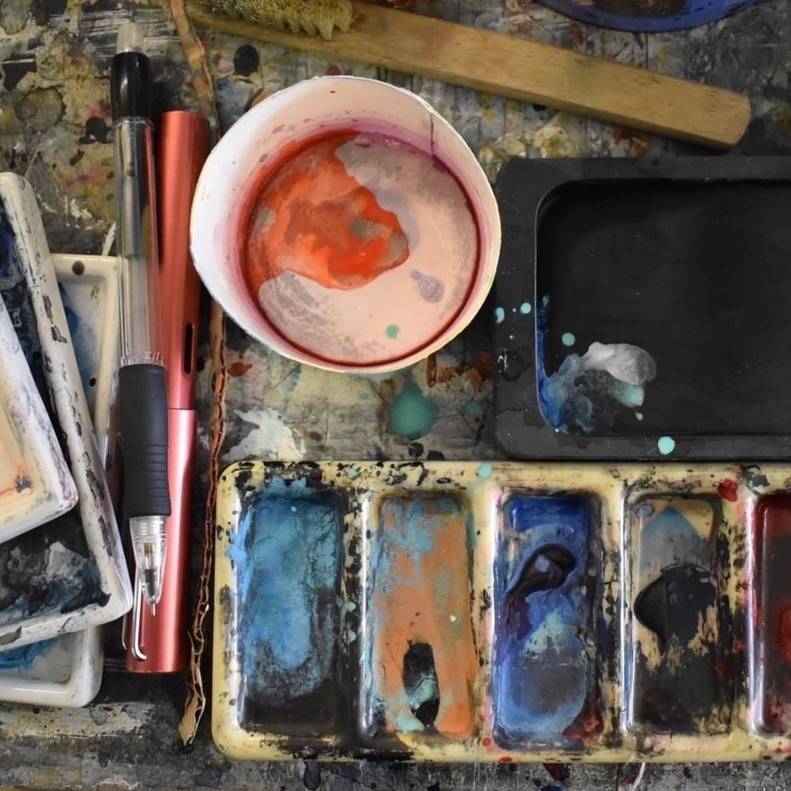
Create a bond with the artist
I know that some designers have fears about working with artists, that they can be highly strung or not willing to work within a set brief. Developing a relationship with the artist is a brilliant way to get the best work from the artist, they really start to understand that particular designers design ‘handwriting’ and how that marries with their own sense of colour or mark making.
On occasion, the designer has let me connect with their clients which have contributed to me making a really personal piece. Once the project was finished the clients thought the work really spoke to them. As an artist that sort of comment feels like winning the lottery, much the same as you the designers feel when you bring a clients brief to life exactly as they dreamt. That is why we are all true creators and why the bond between artist and designer is so vital.
Care when selecting art
Not all designers take such care when selecting the art for their schemes, and some tend to not allocate enough time or budget at the start for the artwork element. If not properly agreed, this can cause real problems at the end of the process from the artist perspective. Thinking of it as a last minute accessory is not helpful at all. I like to think of myself as being creative and flexible – and often help some of my clients to solve problems along the way, that’s when the relationship between artist and designer becomes a really valuable asset.
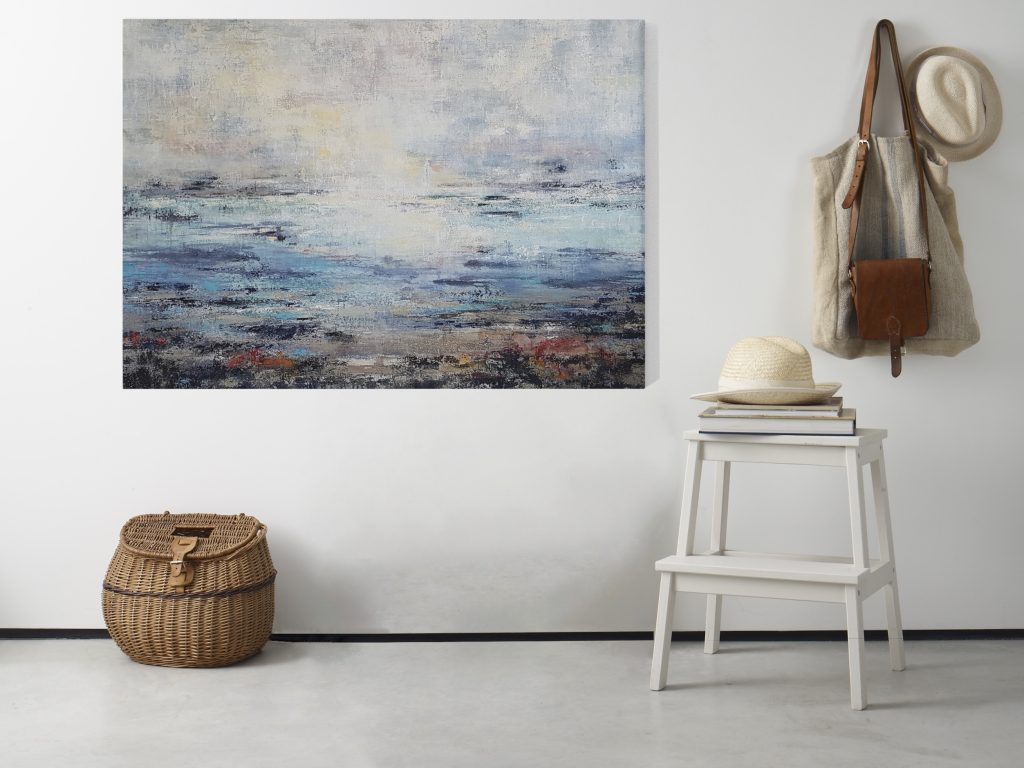
Choose an artist who fits within your visions
In the early days of my career, I used to accept any commission, but now that I am more experienced, I have come to the conclusion that it is important that a designer chooses my work for the feeling or emotion it can bring. My work is often chosen for bedroom or living room spaces for the same reason, as they provide a moment of escape or a feeling of calm.
I saw an uplift in interest during lockdown which is not a surprise! My work often gets specified for a bedroom and living space, again for the same reason to provide a calming feeling. I also work with a number of local designers, they like that I am nearby and that they can pop in and check on progress, or sometimes I do get a call for a designer who has forgotten to specify something, and they ask me what I might have in stock at the studio. Certain sizes (1.2wm and 1.5m) also tend to be in demand, so I try to have those sizes in stock but my work takes a long time to make so it’s a little tricky.

Write a clear and concise artwork brief
I always like to have a written brief and visuals or swatches from a designer, their RAL or Pantone references, and if they have a paint colour that’s a key feature, I will mix the equivalent shade in artist materials and work small accents of this through a piece of work, so I can ensure it will be balanced and feel harmonised. I like to check the designer understands my process, as that’s where the value of the painting lies.
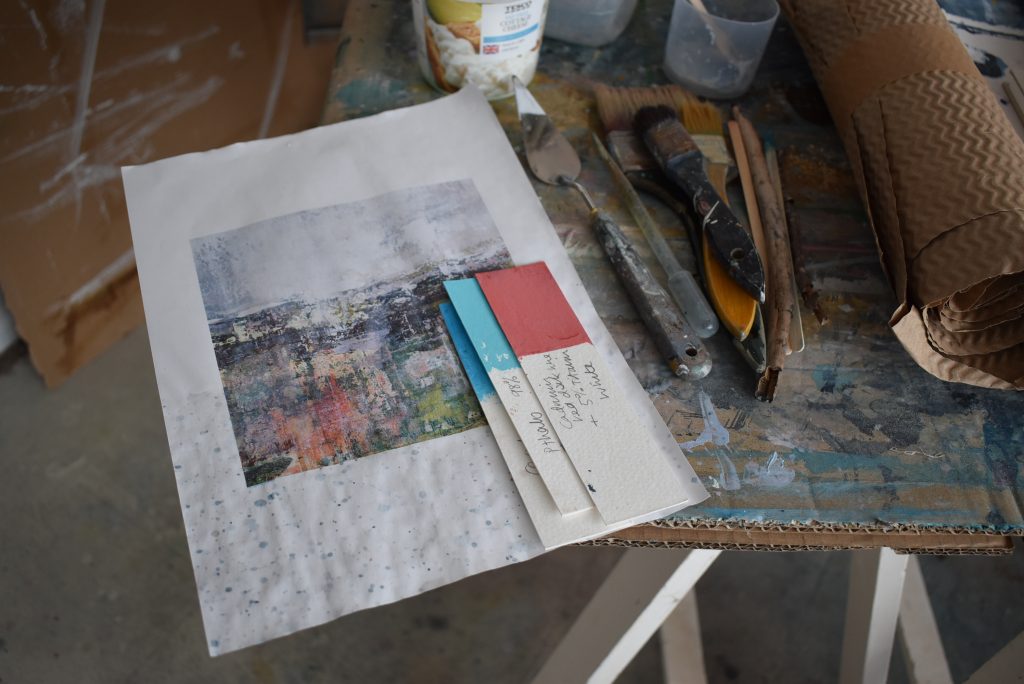
Commission at the start of a project
I mentioned earlier that the designer specifying the art requirement early on in proceedings is important. A piece of my work can take anywhere up to 6-8 or 10-12 weeks to make. I always try and finish ahead of schedule as the end of any designer’s project always gets a little fraught! So there’s generally a little bit of wriggle room.
Respect an artist’s integrity
Integrity in the industry is really important to me. I have been asked by one or two designers to copy another artists work, which is really disingenuous, and I would never do. I looked into the artist they wanted me to copy, and actually the cost was not that unreasonable. This is a great example of the need to budget properly, as they could have bought a piece from that artist or negotiate with them.
Increasingly I am also hearing that quality is an issue when designers are buying from studios who turn out huge amounts of work, with artworks often degrading or loosing colour levels down the line as the right materials and technical decisions have not been undertaken. Knowing the right substrate to use, or moisture resistant stretcher bars, and increasingly with the spotlight on sustainability and wellbeing checking if the materials used are sourced in an ethical manner and make with low impact or toxic free products.
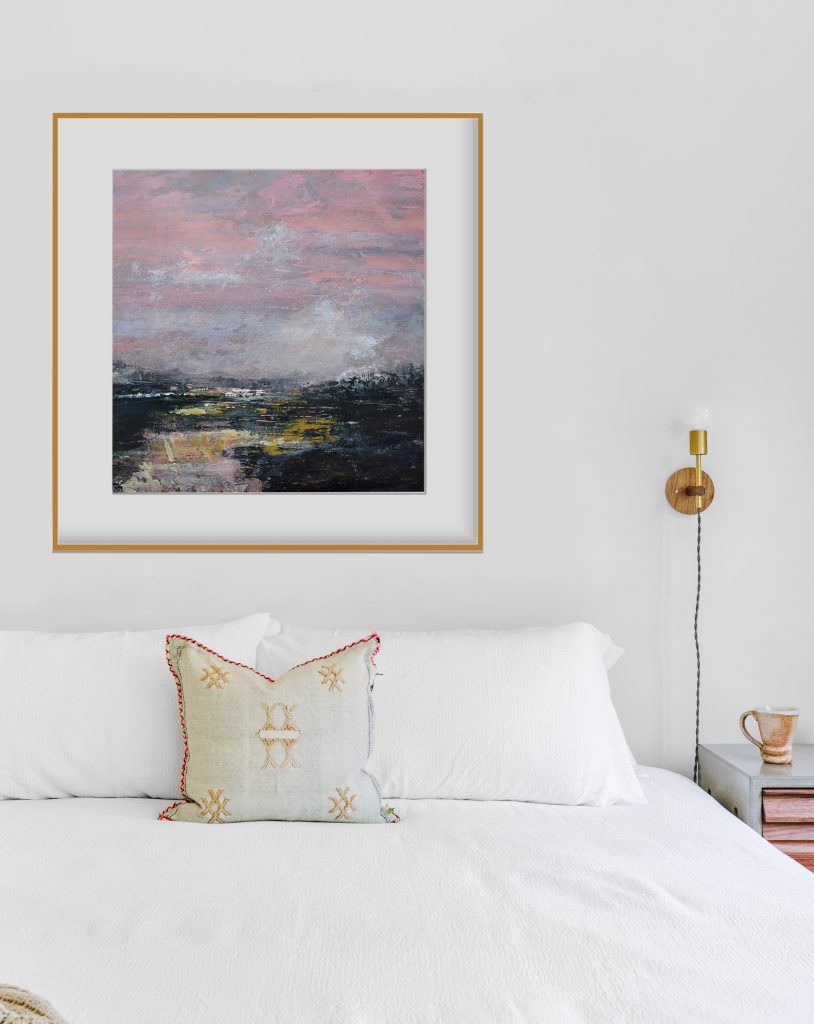
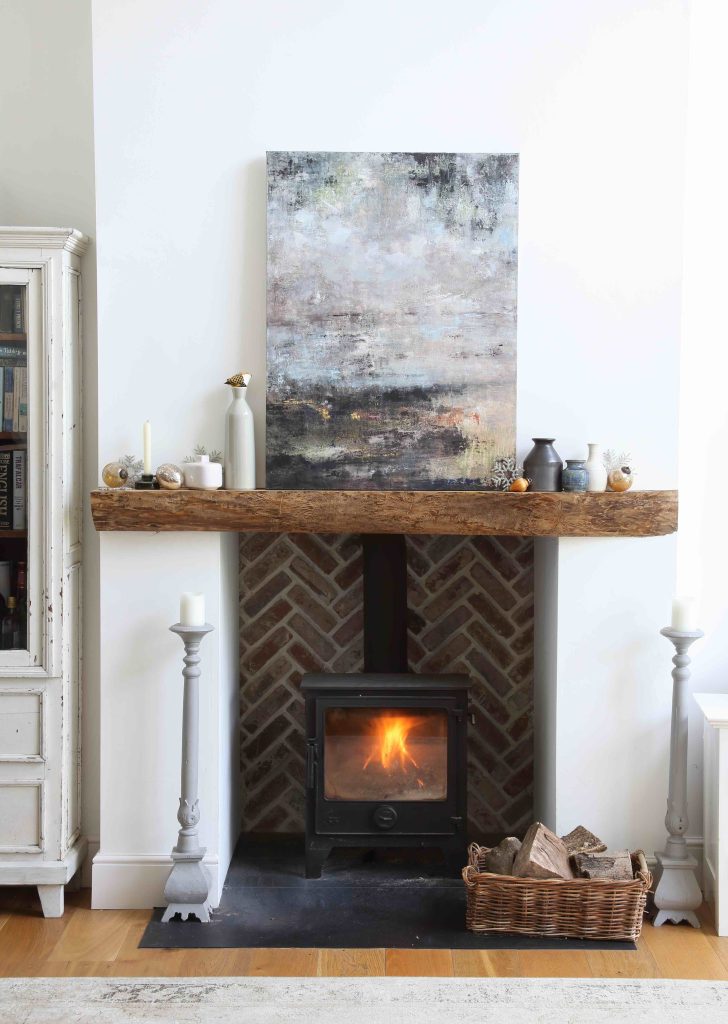
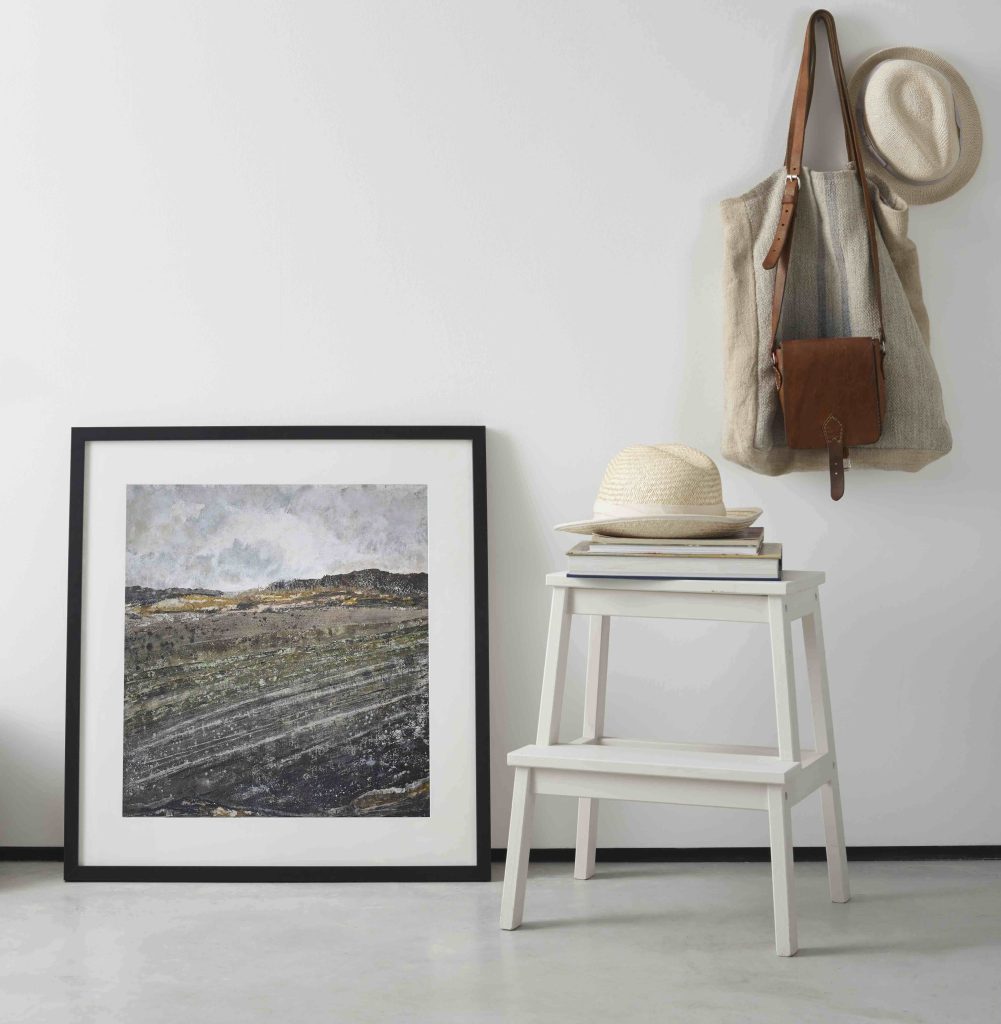
Clear pricing
I price based on hours to make a piece, materials and my unique style. This can vary depending on the nature of the work required. I agree a trade price with my interior clients, so they get it at less than I would sell through say a gallery and then they sell to their clients at retail.
Contracts are important
Lastly, I like to have a contract in place, to ensure that the project does not become unmanageable. I love it when a designer knows exactly what they want but allow me the freedom to make the piece too. Check in’s are necessary, I don’t mind them but micro managing can really damage the creative flow and process. Zoom calls are great for timeline checks and general checks, but I do like the designers to physically view the colours in progress, as with my process its very involved, and so quick ‘tweaks’ are not so possible easily! Communication is key to ensure all parties are happy with the outcome.
View Emma’s work here
